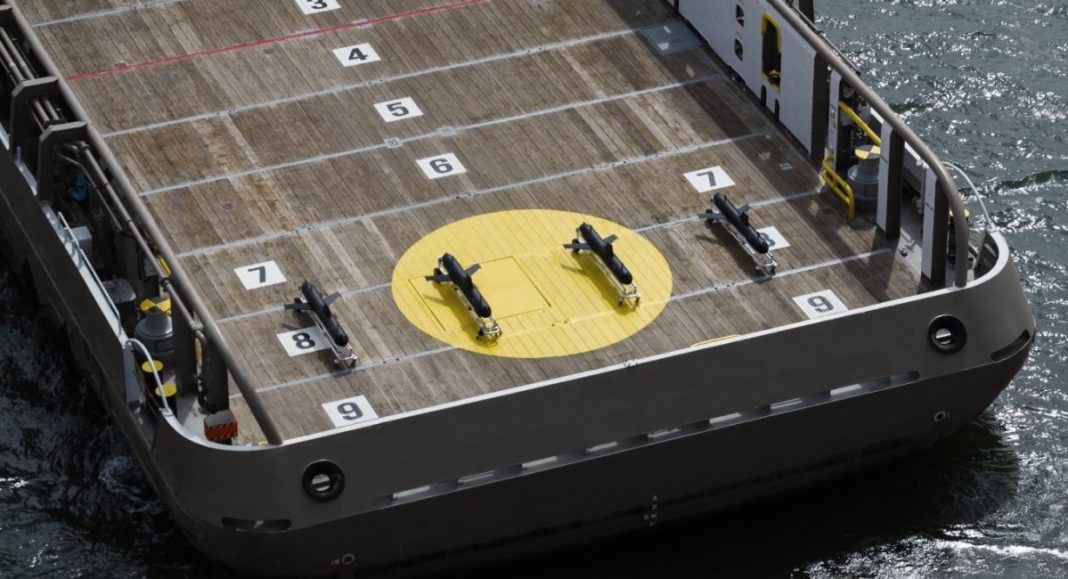A major step in underwater defense is coming to the United Kingdom. German defense company Helsing has announced the construction of a new factory in Plymouth. This facility will produce the SG-1 Fantom, an advanced unmanned underwater vehicle. The military calls it an Invisible Submarine Hunter because it detects enemy submarines, ships, and hidden underwater movements.
UK to Host New Factory for Invisible Submarine Hunter
To fund the factory, Helsing will raise £350 million, which is about $477 million USD. This funding comes under the Trinity House agreement between Germany and the UK. British officials confirmed that the factory is expected to open later this year.
The SG-1 Fantom is known as an invisible submarine hunter. It has a unique design that makes it almost impossible to detect. Made from plastic and powered by ocean currents, it operates without any engine. This silent movement helps it stay hidden from enemy sensors.
The drone is compact. It measures 195 centimeters in length and just 28 centimeters in diameter. It weighs only 60 kilograms, and its lightweight design allows operators to handle it easily. Despite its size, the engineers packed it with high-tech equipment for underwater surveillance.
Lutsk burns under Russian drone storm — 296 shot down, 415 vanish from radar
Advanced AI Turns Drone into Invisible Submarine Hunter
What sets the SG-1 Fantom apart is its built-in artificial intelligence. It uses a powerful system called Lura AI, along with sonar and other advanced sensors. This combination allows it to detect and identify underwater threats with incredible speed and accuracy.
The sonar system can pick up extremely quiet underwater sounds. Lura AI can detect noises that are ten times quieter than what expert sonar operators can hear. It can also classify targets forty times faster than humans.
Once deployed, the drone drifts at a fixed depth. It constantly listens and scans its surroundings. If it detects a submarine or any suspicious underwater activity, it rises to the surface. It then uses a satellite antenna to send the location and target information to command headquarters.
One of the most impressive features is its endurance. The SG-1 Fantom can remain underwater for up to three months. During this time, it performs its mission silently and efficiently. Afterward, it can be recovered, recharged, and used again.
Ukraine sanctions Chinese firms supplying Shahed drone components to Russia
The glider doesn’t need special launch or recovery tools. It can be handled by both naval and commercial ships. This makes it easy to deploy in many locations and in large numbers.
Because of its simple structure and low cost, many of these drones can be built and used together. This allows for wide coverage over large sea areas. The use of multiple gliders increases the chances of detecting hidden submarines and tracking movements.
Its stealth and advanced AI system make it a true invisible submarine hunter, giving it a strong role in modern underwater defense.
From Ocean Research to Undersea Defense
Interestingly, the SG-1 Fantom did not start as a military device. It was originally developed for marine research. Scientists used it to study ocean conditions and track marine animals like whales. But with the addition of the Lura AI system, it became a powerful underwater surveillance tool.
Its transformation from a science tool to a defense asset shows how technology can adapt to different needs. With current naval tensions, especially due to russia and china, the ability to monitor underwater space is more important than ever.
Drone Armageddon: Russia Hits Kyiv in Deadliest Strike Yet—Trump Calls Putin, Then Zelenskiy
The SG-1 Fantom acts like a smart, reusable sonar buoy. But it is more advanced, more silent, and far harder to detect. Its ability to operate without being noticed makes it a perfect fit for protecting undersea cables, pipelines, and defense zones.
By building the new factory in Plymouth, the UK will play a key role in producing this invisible submarine hunter. It strengthens cooperation between Germany and the UK under the Trinity House agreement and helps improve underwater security in European waters.
